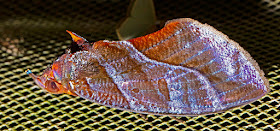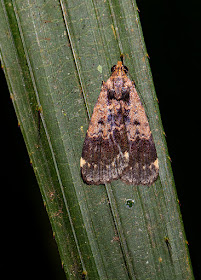Here are some local moths to cheer up your day. These were all photographed at the same place. It has been suggested that perhaps 4000 species of moths occur in the rainforests around Kuranda.
To get an idea of size, the holes on the light sheet are roughly 1 mm across.
All of these moths were photographed at the same locality and within the past 2 weeks.
Click on the photos to enlarge
My world as I see it!
Cosmogonia decorata
Crocanthes characotis
Eublemma anachoresis
Eudocima ?cocalus male
Pingasa blanda
Tirathaba rufivena
Delgamma pangonia
Hypena gypsospila
Pingasa chlora
Theila siennata
Spodoptera litura
Aeolochroma turneri
Amyna apicipuncta
Anthela sp
Asura monospila
Chaetolopha pseudooxyntis
Chrysochlororoma megaloptera
Cleora goldfinchi
Elusa semipecten
Eumelea sp
Leucania yu
Pindara serratiliinea?
Phazaca mutans
Bulonga distans
Cleora costiplaga
Cosmostola pyrrhogona
Crambidae; Wurthinae
Heterallactis ?stenochrysa
Hypena gonospilalis
Lacalma mniomima
Lamprophaia ablactalis
Glyphodes onychinalis
Megarosticha repetitalis
Keeping a safe distance: Mocis frugalis
Pantydia sp Noctuidae
Glyphodes onychinalis
Palpita sp
Maceda mansueta
Phycitinae Pyralidae
?Lacera sp
? Tigriodes
Heteroteucha dichroella
Casbia fasciata

- Chamaita barnardi
Imma sp
Spodoptera mauritia
Paliga ignealis
Pachythrix hampsoni
Imma lyrifera Immidae
Hyposidra talaca Geometridae
Conogethes sp
Chorodna strixaria
Eudocima materna
Oecophoridae; genus ?
Ubida sp
Moearchis hypomacra
Tortricidae; genus ?
Trigonodes hyppasia
Nygmia (Euproctis) actor
Naarda xanthonephra
Meliattha signfera
Limacodidae
Hydriollodes sp
Heterallactis stenochrysa
Crocanthes sidonia
Catoria delectaria
Casera bella
Asota heliconia
Trigonobela perfenestrata
Spodoptera exempla
Oeonisitis altica
Agathodes ostentalis
Eusabena paraphragma Crambidae
Playing possum; Nygmia (Euproctis) actor
Tridrepana lunulata Drepanidae



























































































